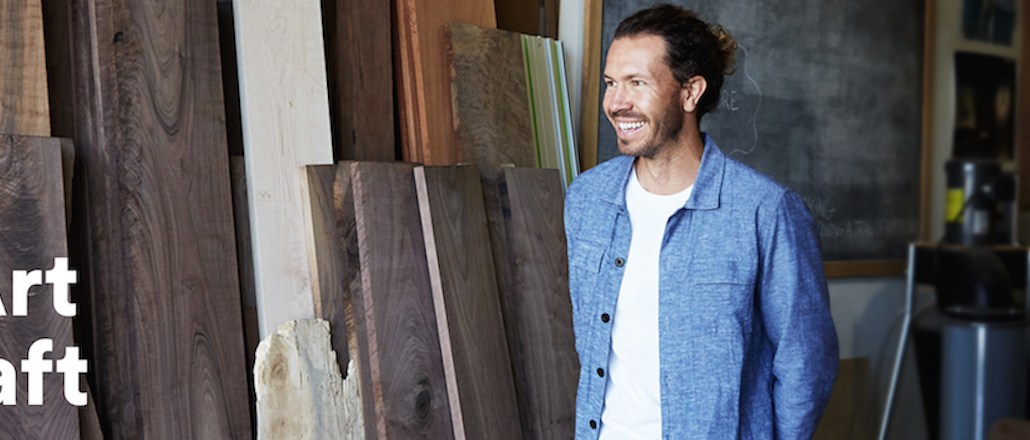Save 50% on a 3-month Digiday+ membership. Ends Dec 5.

This is a story from Glossy, Digiday Media’s new publication devoted to how technology is changing the fashion and luxury industries.
Frank + Oak CMO Eric Alper said that when the menswear retail brand four years ago, he knew that men didn’t necessarily need more product variety, but instead, more guidance.
“If you’re looking for a new blue shirt online, you can scroll endlessly,” said Alper. “I know, because I’ve done it. So the value we bring is playing the role of a style advisor for men.”
In order to serve the type of customer that is ready and willing to get personal style advice, Frank + Oak built a frequent shopper program, called Frank + Oak Elevate. For $20 a year, customers can get free express shipping, cash back deals and smarter, personalized in-store customer service.
Elevate is the replacement of the brand’s Hunt Club program, a Trunk Club-like subscription box that sent users monthly selections of stylist-selected items to then pay to keep or send back. While Elevate launched in February 2016, Hunt Club members were transferred automatically to the new program, and the company claims that it has 2.5 million current members.
Today, the company is also relaunching its mobile app with new features: a 24-hour live chat service with stylists, in-store appointment booking, and two-hour on demand shipping. Both are only available through the app, which also uses beacon technology to recognize Elevate members when they walk in, and then offer them up a coffee.

Ad position: web_incontent_pos1
“When you go into a big department store, it likely has legacy technology that results in a customer experience that’s anonymous,” said Alper. “Some people want that, but others want to engage and have a conversation, so we built that platform from the ground up.”
By exchanging its subscription box membership with a personalized shopper program, Frank + Oak is unifying its digital and physical offerings. On mobile, its new app features can serve customers wherever they want through live chat and bring customers into stores through in-app booking. On-demand orders are fulfilled in Frank + Oak retail stores.
For managing shoppers across channels, Frank + Oak built a point-of-sale system in order to keep track of customer profiles for in store, mobile and online shopping. Alper said that everything shared with stylists is kept in the profile: what customers have tried on, sizing information, personal preferences and other tips like where the customer works and big upcoming events.
“The value in Frank & Oak’s tech-driven retail model is the data they collect about their customers’ personal styling preferences,” said Mary Beth Keelty, CMO of PM Digital. “If they can implement that data not only in their virtual styling offering, but also to the in-store experience, they’re in a much better position to increase customer loyalty.”
The company’s stores also offer only 30 to 40 percent of its current products in order to make more room for personal style consultations, as well as coffee shops and barber shops.
Ad position: web_incontent_pos2
“The brand focuses on that crucial blend of online and in-store,” said Keelty. “They’re creating a cohesive experience for their customers.”
To get that cohesive experience, customers have to sign up for an Elevate membership. Alper acknowledges that the program is meant to bring customers coming back — he said that Elevate members purchase about three times more than non-members — but the company doesn’t refer to it internally as a loyalty program.
“We wanted to create a way of validating loyalty, but the Elevate program isn’t as much of a way to drive loyalty as it is a way for people to more easily shop,” said Alper.
That mindset reflects the way modern retail loyalty programs, like Nike+ and Sephora’s Color IQ, behave. According to Bond Brand Loyalty’s 2015 Loyalty Report, successful models are shifting away from points and tiers and toward personalized experiences.
“Traditional loyalty programs are kind of dead,” said Zach Paradis, director of experience and innovation strategy at SapientNitro. “A lot of the reason is that we have more retailers for niche parts of our lives. A single department store model worked for loyalty programs, but now we’re shopping many different experiences.”
More in Marketing

Ulta, Best Buy and Adidas dominate AI holiday shopping mentions
The brands that are seeing the biggest boost from this shift in consumer behavior are some of the biggest retailers.

U.K. retailer Boots leads brand efforts to invest in ad creative’s data layer
For media dollars to make an impact, brands need ad creative that actually hits. More CMOs are investing in pre- and post-flight measurement.

‘AI is permeating everything we do’: How Guitar Center developed 2 AI tools this year
This summer, the company launched a chatbot called Rig Advisor to help customers find the right instruments and products.
Ad position: web_bfu



